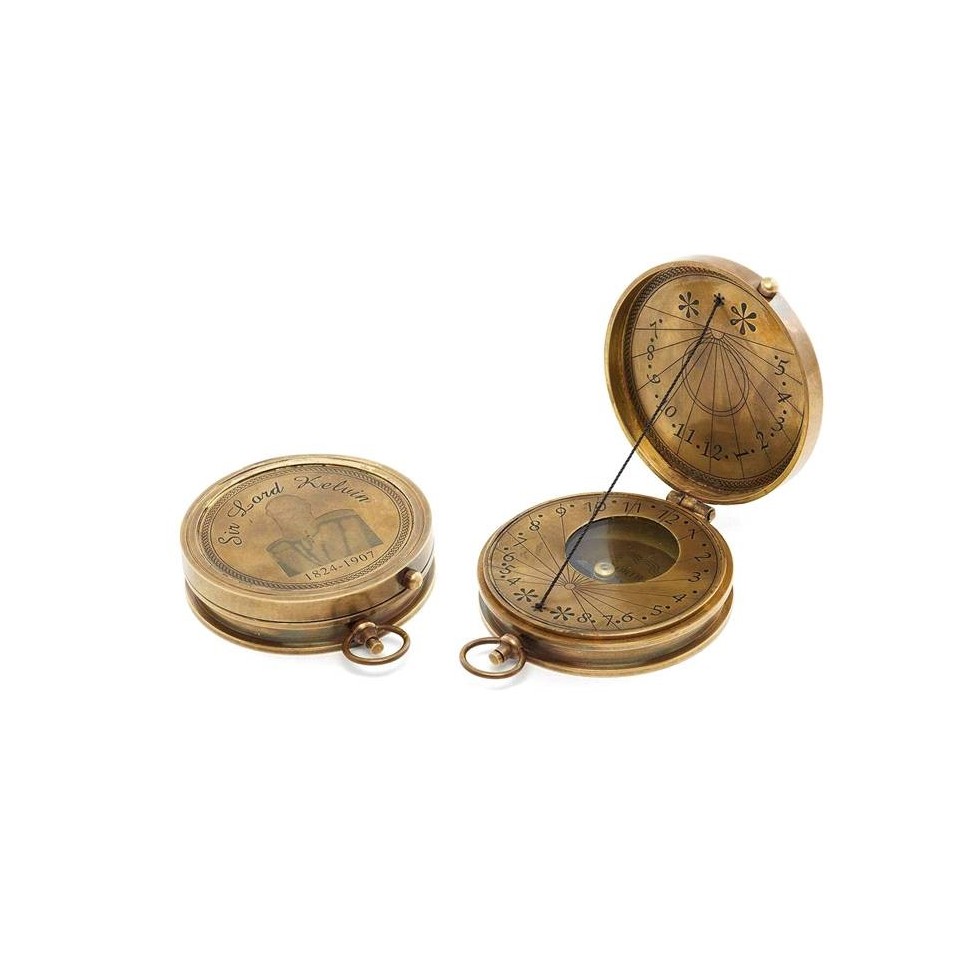



Reproducion antiqued brass compass-sundial with protective lid.
The compass (from the Latin "passus" ("step")) opened up the world to exploration and discovery. The principle of the magnetic needle was already known to the Chinese in the 3rd century BC and was first used by feng shui priests to tell them where and how to build. It was adapted to maritime navigation by Chinese sailors around the year 1000. The first compasses comprised a magnetic needle floating in a bowl of water, with the needle suspended on a thread or threaded through a reed. The Arabs perfected this by mounting the needle on a pivot. The compass arrived in Europe between the 10th and 11th centuries, enabling sailers to cross the oceans and explorers to discover the continents. The first instrument to resemble the modern compass is attributed to Portuguese citizen Ferrande (1483).
Reproducion antiqued brass compass-sundial with protective lid.
Reproduction of a compass-sundial in brass of the type that Christopher Columbus would have used.
Tide movement.
Reproduction of an aged brass theodolite with an acacia wood platform on the axis of which is a compass.
Handmade reproduction of a fog horn, used as a maritime signaling instrument. Made of polished brass.
Brass compass with dial mounted in an acacia wood box with anchor motif.
Antique brass compass with dial mounted in an acacia wood base.